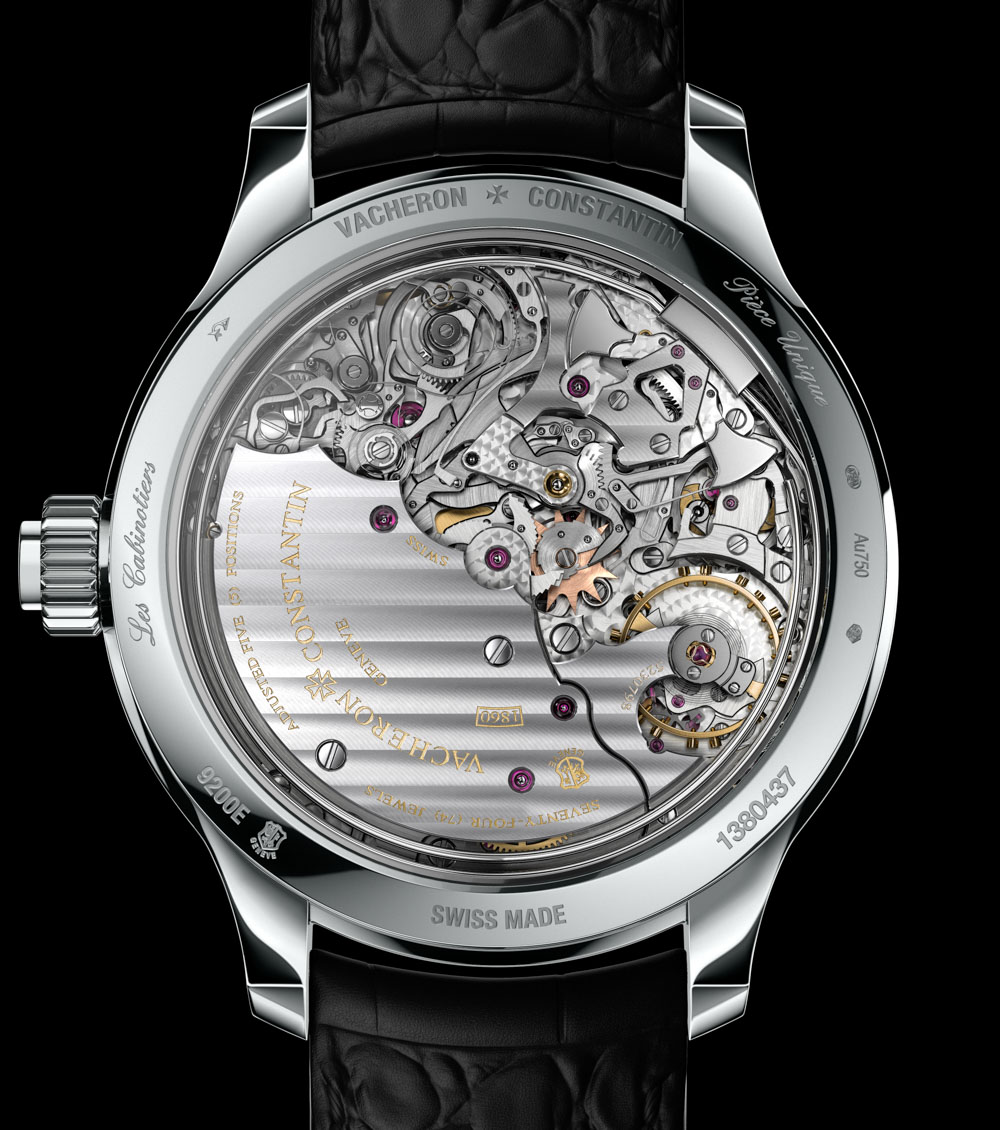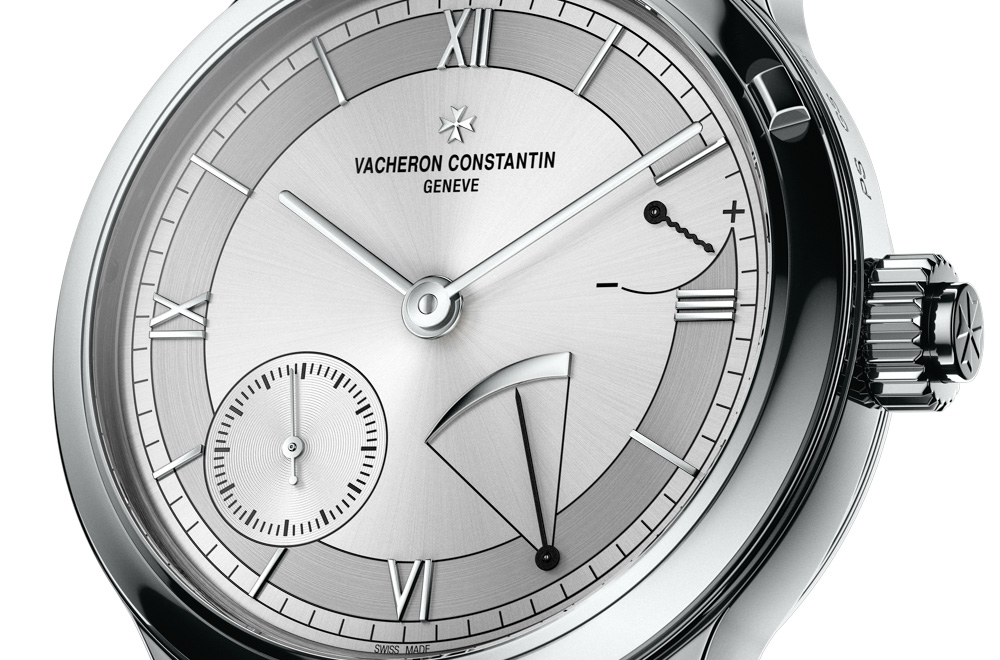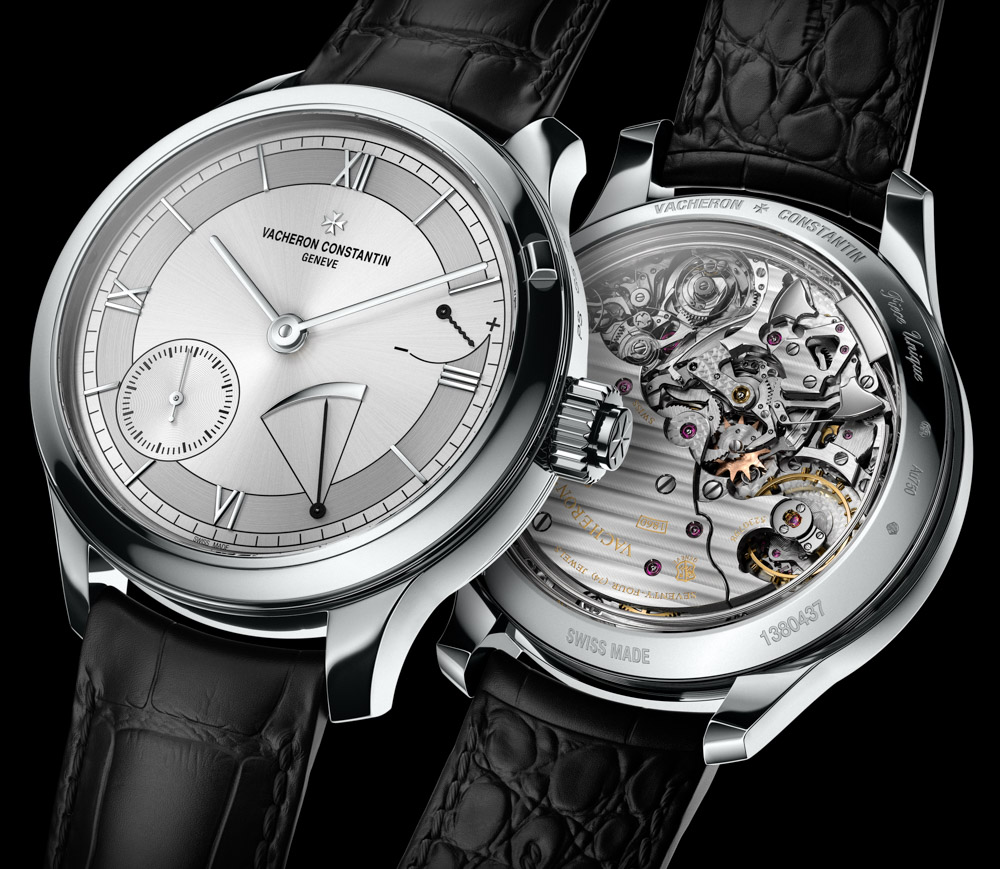
I’ve you’ve got over a million dollars to spend and are keen on musical watches, then SIHH 2017 will present you with at least a few difficult purchase decisions to make. Our friends in Geneva at Vacheron Constantin now debut a type of watch that has been historically rather uncommon, but that I believe might be the new “it” musical timepiece now that the “mere” minute repeater isn’t as uncommon as it once was. Yes, in the luxury watch world, there are trendy million-dollar-plus products. Fun, right? I’m humbled by just how pretty the Vacheron Constantin Les Cabinotiers Symphonia Grande Sonnerie 1860 actually is. Its appeal isn’t merely skin deep, and there is a lot to discuss about this sonnerie and minute repeater combination with a case and dial intended to be designed individually for the buyer.
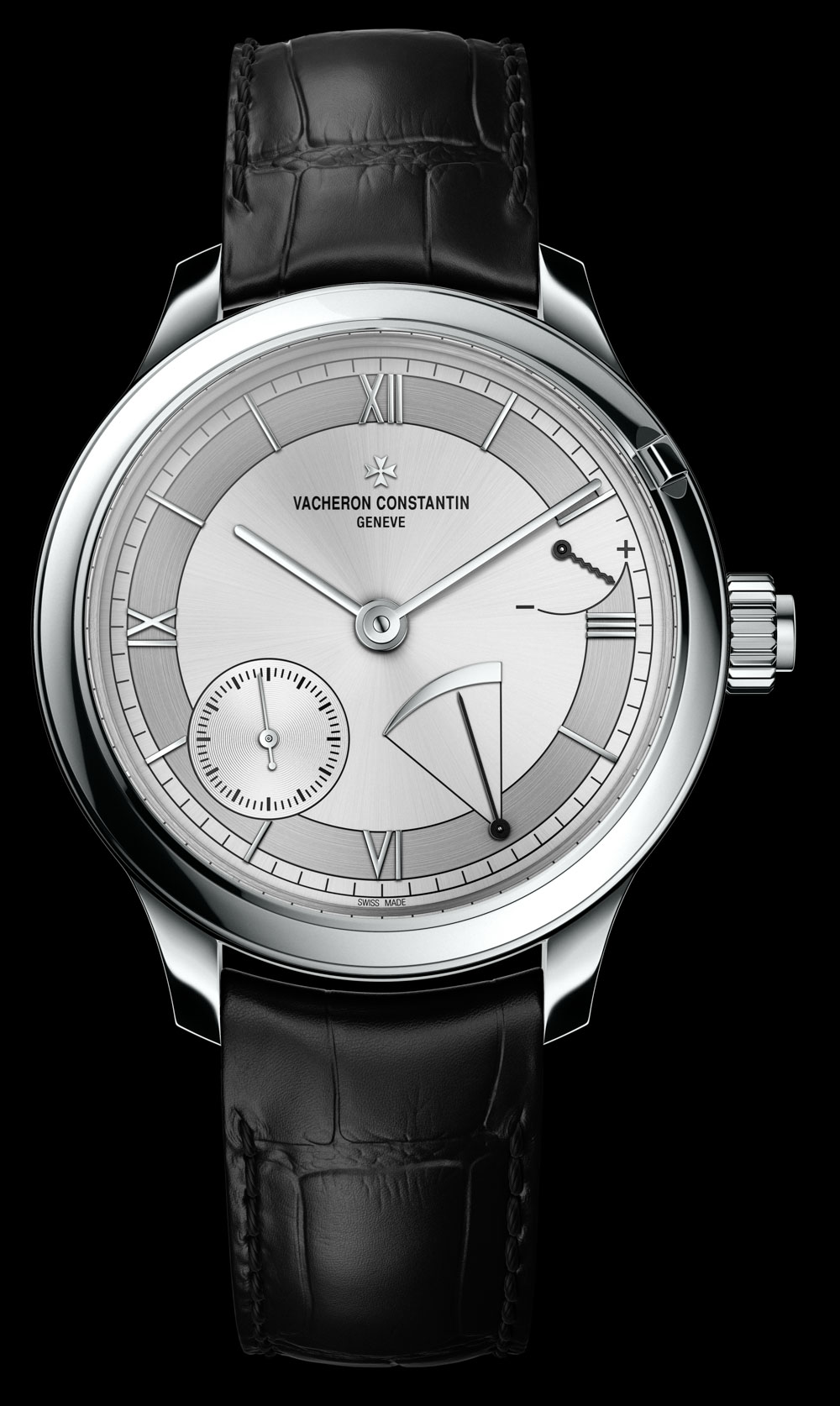
That’s right, the reason Vacheron Constant refers to the Les Cabinotiers Symphonia Grande Sonnerie 1860 as a “Grand Sonnerie” is because it is its own type of grande complication including both a minute repeater and sonnerie. The former complication is used to indicate the current time using a series of chimes when the user manually activates the minute repeater system. In this case, it is done by pressing a pusher in the crown. So the first departure from the norm here is that like many other modern minute repeaters, Vacheron Constantin is moving away from a delicate “all or nothing” sliding activator to a more secure pusher system.
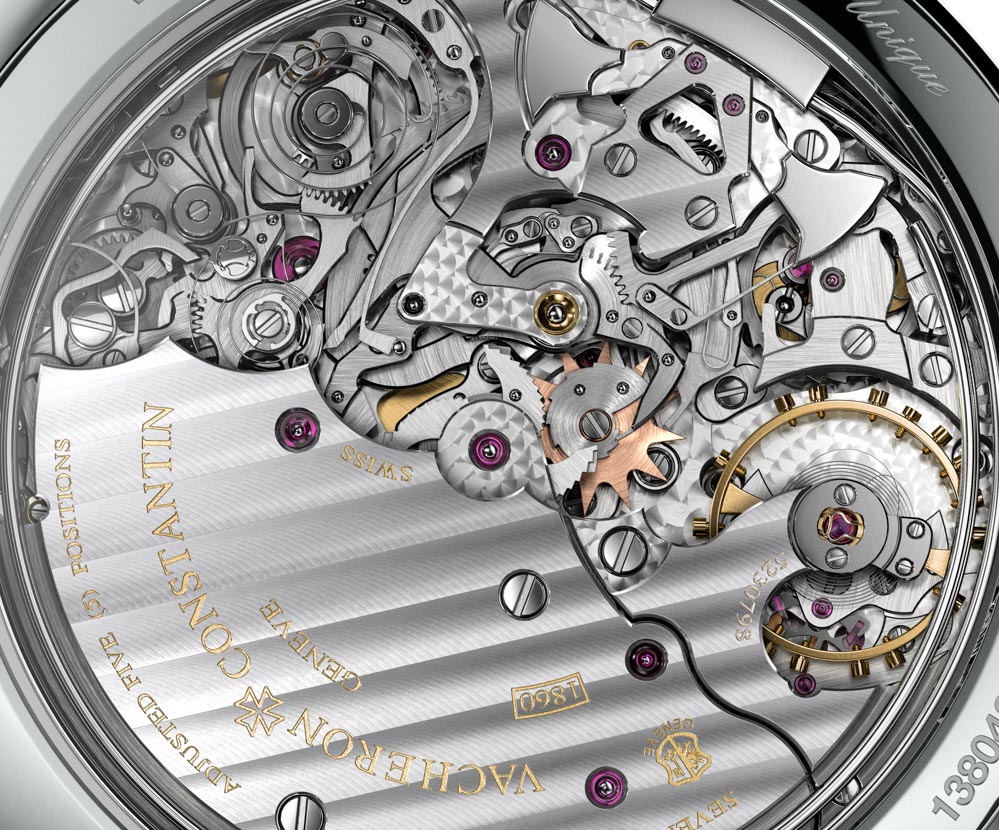
While minute repeaters indicate the current time, their “cousin complication” is the sonnerie. Both systems use hammers and gongs to indicate the time through chimes which represent the various parts of the hour. What is different about a sonnerie as opposed to a minute repeater is that it offers the ability to automatically activate the chiming mechanism at various intervals – such as at the top of each hour. Like the minute repeater complication, sonnerie systems have different flavors. The two most common forms of it (and often both are included in the same watch) are a petite sonnerie and a grande sonnerie. The difference is subtle (as are most things in high-end complications) but related to the information being conveyed while the chiming mechanism is activated, as well as the frequency thereof.

Both the petite and grande sonnerie functions chime the time automatically at various intervals each hour, but the difference is how often. When the watch is in grande sonnerie mode, it indicates the complete time each fifteen minutes using a different sound for the hours and quarters (15-minute segments). Thus, grande sonnerie mode has the Vacheron Constantin Les Cabinotiers Symphonia Grande Sonnerie 1860 automatically indicate the current time, four times per hour. Petite sonnerie mode is similar, but rather than chime four times per and hour, it only chimes once at the top of each other, and thus only needs to indicate the hours versus the quarters.
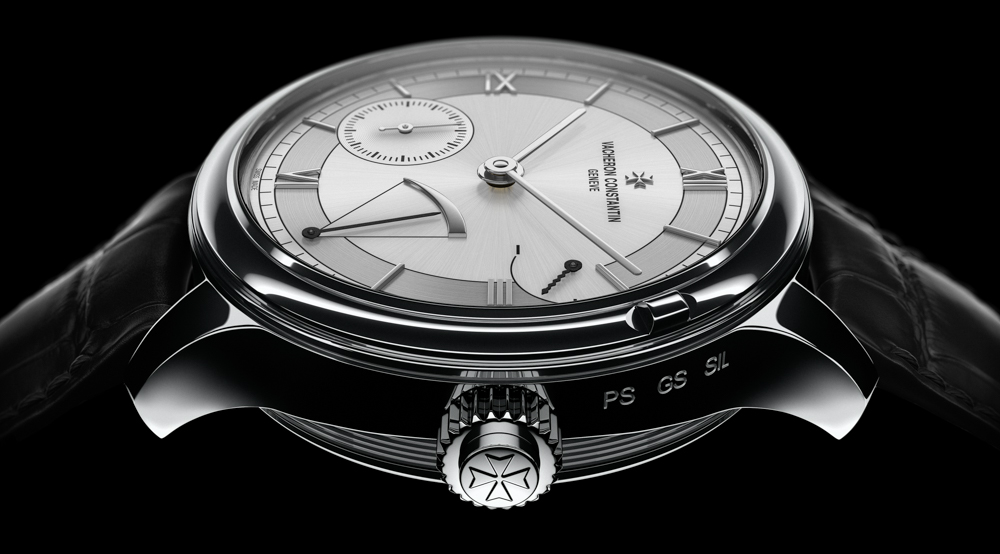
A slider on the case allows the wearer to change between grande and petite sonnerie modes, as well as “silence” which turns the sonnerie function off. Not only is this a useful feature when you don’t want the watch bothering you, but the sonnerie complications require a lot of power. So much power, in fact, that there is a separate mainspring barrel for the sonnerie, as well as two power reserve indicators on the dial (one for the sonnerie power, and one for the time).
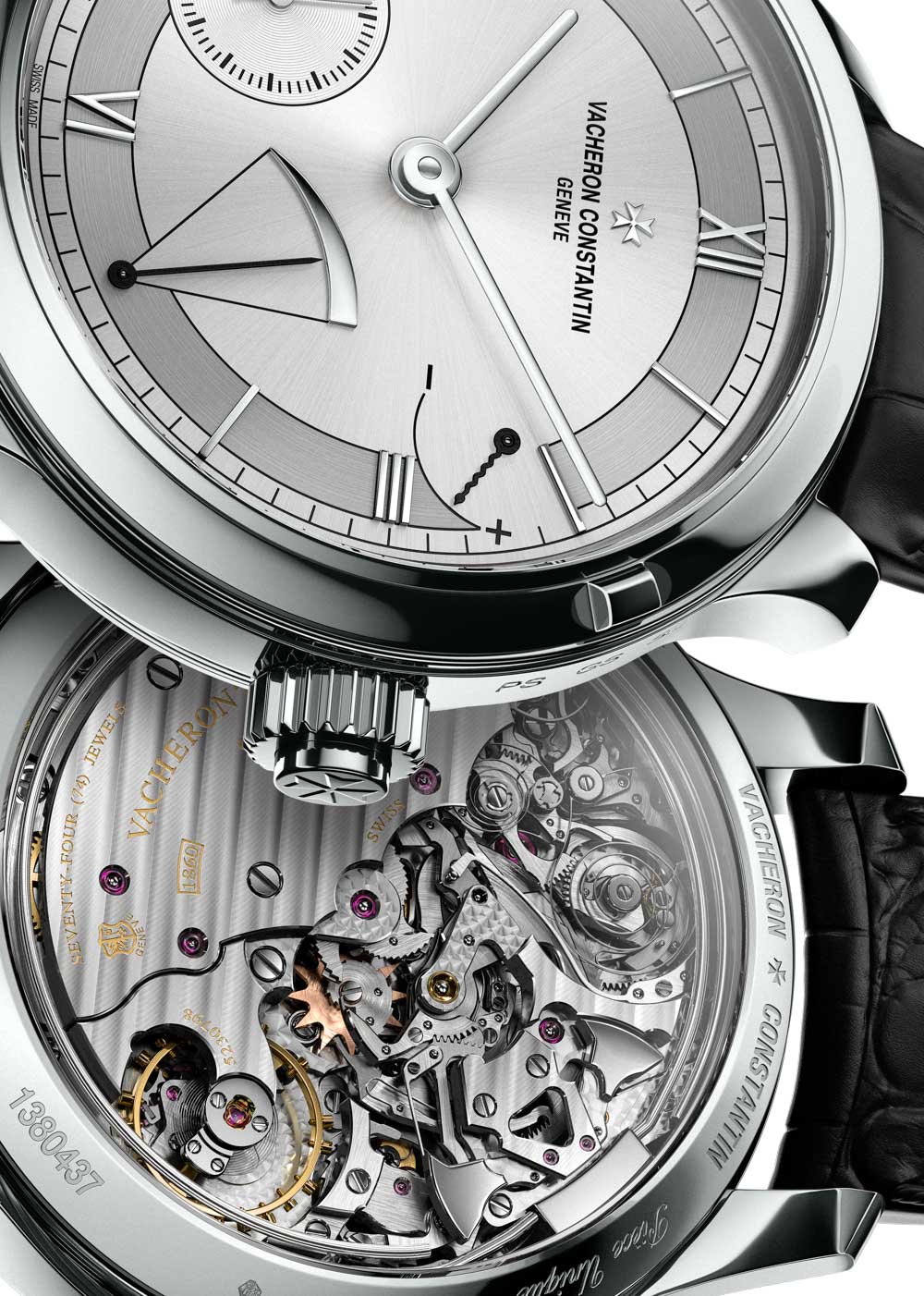
I mentioned that there are other “competitive” watches at SIHH 2017 with their own flavors of this complication. The most notable one as of now is the Greubel Forsey Grand Sonnerie. Costing over 1.1 million Swiss francs, the Grande Sonnerie by Greubel Forsey adds an automatic winding system for the sonnerie’s power, and a tourbillon – but more on this a bit later.
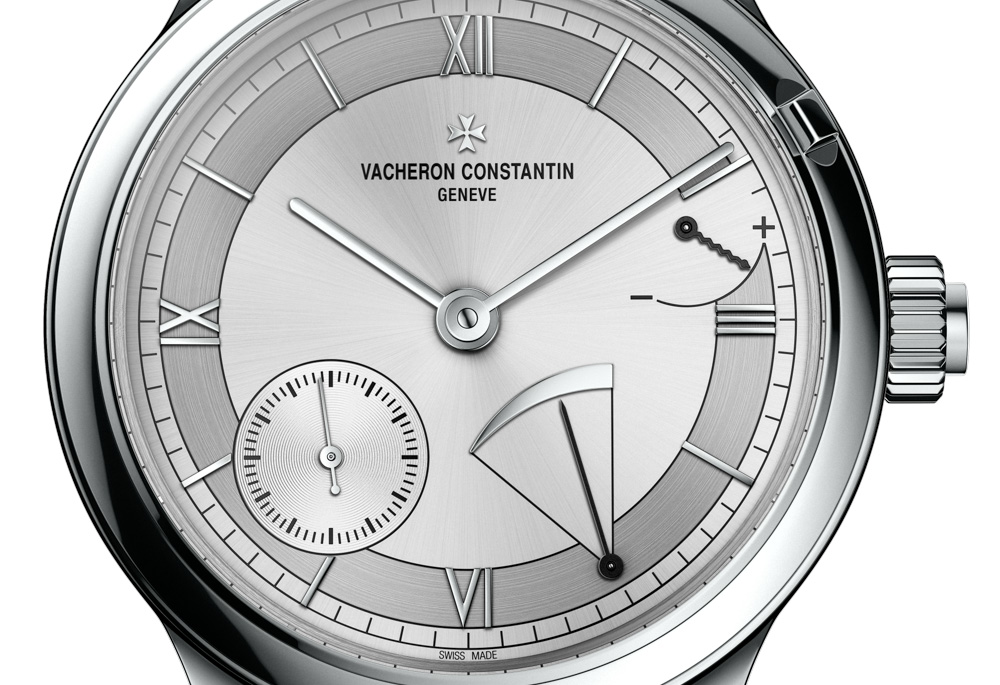
One of the more interesting hallmarks of musical chiming watches is that, in many instances, a single master watchmaker is required to assemble and test them. The reason for this is that getting them to work properly requires a lot of tweaking and knowing how various parts fit together. A lot of that tweaking is also to ensure that the sound coming from the movement is as attractive as possible. Vacheron Constantin claims that it takes about 500 hours or so for a single watchmaker to assemble and test a single caliber 1860 movement that powers the Vacheron Constantin Les Cabinotiers Symphonia Grande Sonnerie 1860 watch. The movement is produced from 727 hands-finished parts. It can be admired through the rear of the watch’s sapphire crystal window.
When you invest in an impractically high-end minute repeater or sonnerie, you should do the non-obvious and look for practical features. Given that these fine and extremely delicate mechanical movements are prone to breaking easily, they need care in their operation. With that said, movements like the caliber 1860 have been developed by Vacheron Constantin with a host of safety and convenience features to ensure much easier and safer operation…
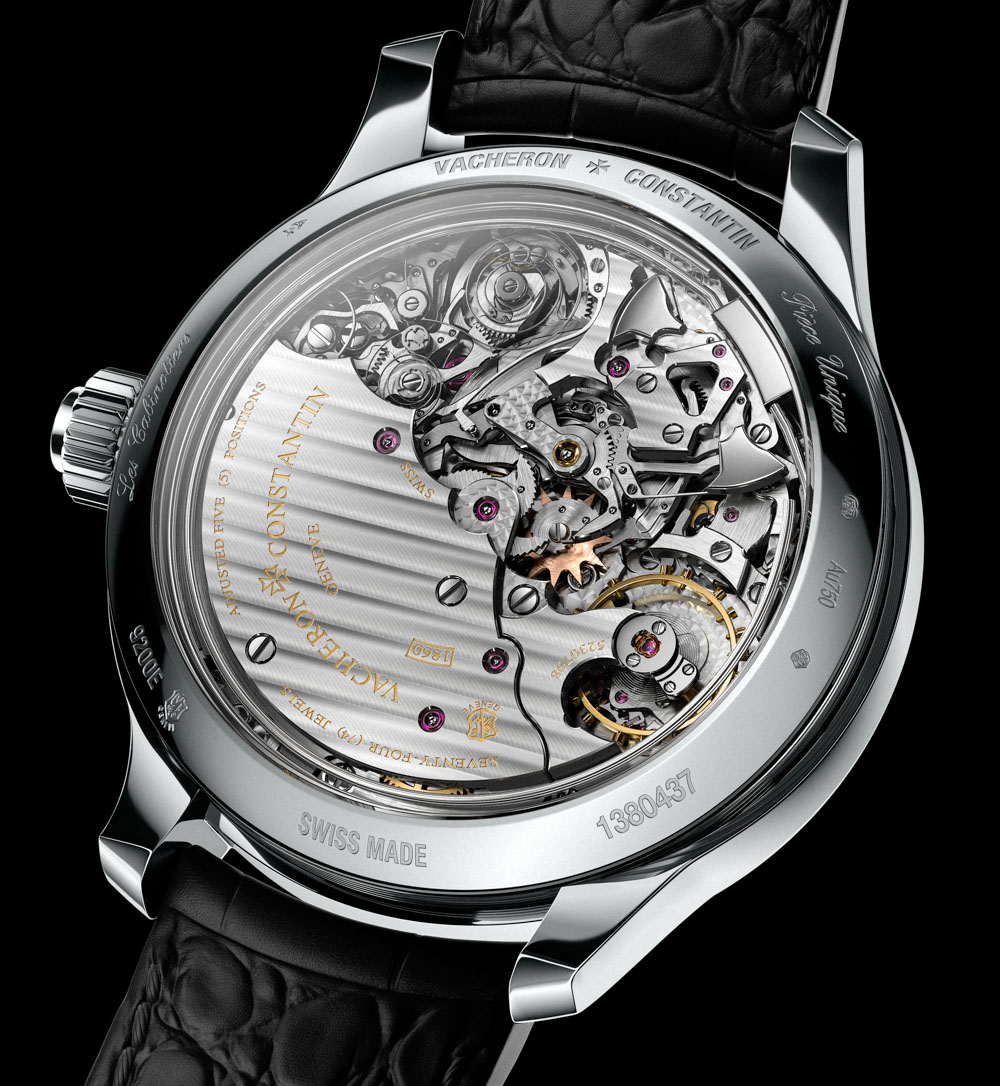
…though when we say “developed by Vacheron Constantin,” we want to add that the movement looks extremely similar to the Greubel Forsey Grande Sonnerie that was launched at the exact same time as this Les Cabinotiers piece. Sure, the tourbillon has been swapped out for a much more simple traditional escapement layout and the automatic winding for the sonnerie has been removed, but the positioning of crucially important components both on the case-back and dial are exactly the same – and so is the dial layout (only the hammers are now shown on the back and not the dial side). We do not have any official information on this but the similarities are uncanny.
These features include a series of little things like ensuring that the minute repeater or sonnerie complications don’t activate if there isn’t enough power to fully finish sounding the time, and a system to prevent adjusting the time while a chiming mode is activated. In addition to security features, the 1860 was developed to remove some of the quirks which chiming watches can have. These include delays in when the complications activate, as well as phantom gong hits which are not intended. I’ve not tested out the watch myself at the time of writing, but one of the most appealing elements of the Vacheron Constantin Les Cabinotiers Symphonia Grande Sonnerie 1860 isn’t the complicated assortment of features, but rather the dedication to utility and beauty in their use.
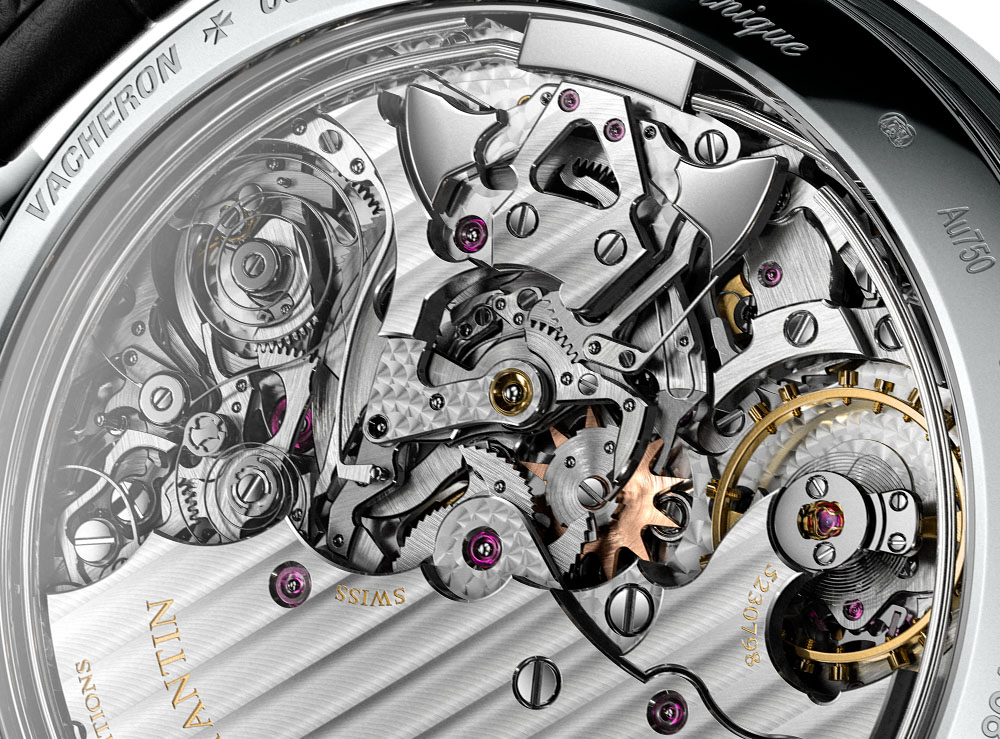
The caliber 1860 movement is manually wound, and it is important to mention that winding the crown in one direction winds one barrel, while winding it in the other direction winds the other (again, one for the time and one for the chiming complications). The 727-part movement is 9.1mm thick and 37mm wide. It operates at 3Hz (21,600bph) with a power reserve of 72 hours for the time (which indicates the hours and minutes with an off-centered subdial for the seconds hand) and 20 hours for the “strikework” power.
All of this is contained in a large (needfully so) 45mm-wide case that is 15.1mm thick – here, in 18k white gold. This is going to be among the boldest wrist watches currently, or perhaps ever, produced by Vacheron Constantin. This demonstration version of the Vacheron Constantin Les Cabinotiers Symphonia Grande Sonnerie 1860 comes in an 18k white gold case with an elegantly simple and classic dial. I don’t want to discuss the design of the case and dial too much for a very specific reason. That is because given how much these watches will cost and how long it takes to make them, Vacheron Constantin decided to offer each one as a bespoke “piece unique” specially customized to the tastes and desires of the owner. Therefore, this example is not necessarily perfectly representative of others in the series to follow.
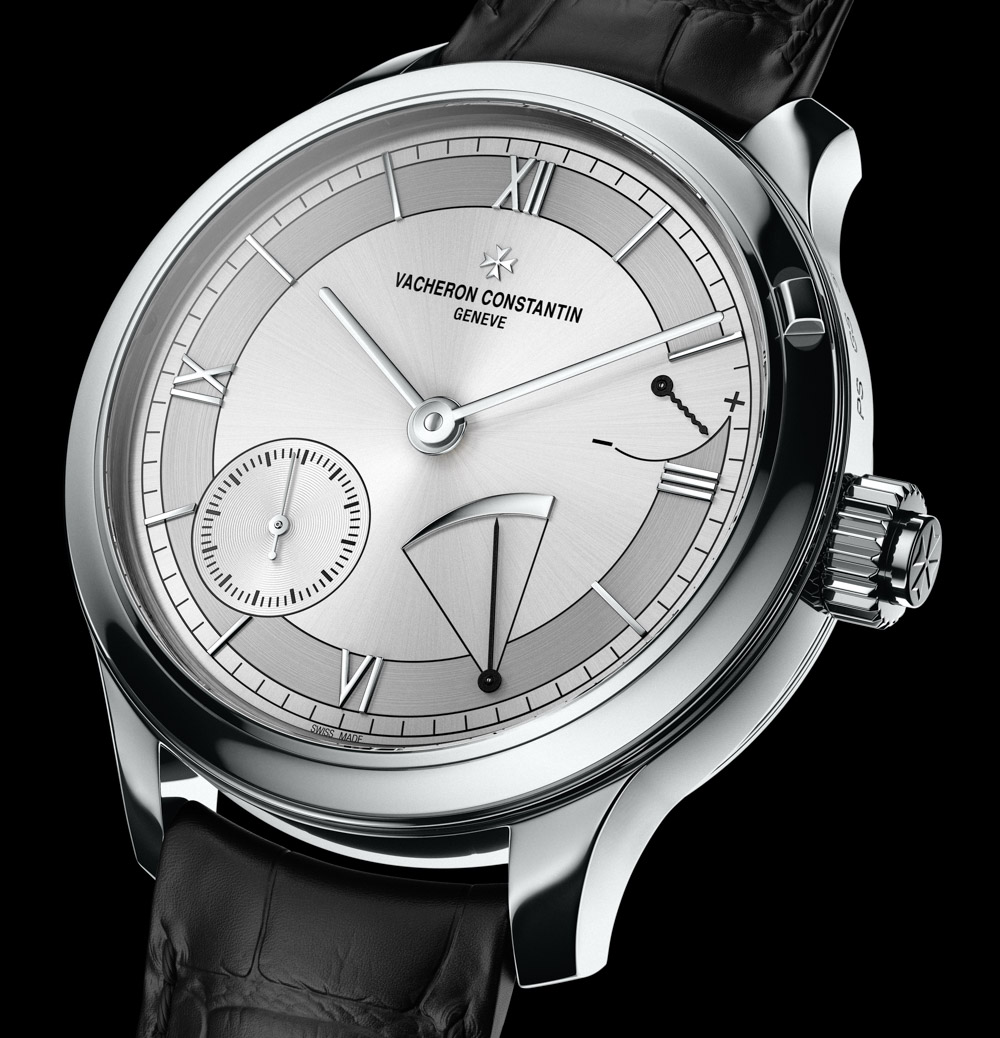
In practical terms, that means part of the service of this watch (and one reason that price is difficult to estimate) is to make it bespoke for the owner. This fact is further expressed in the name of the watch, as “Les Cabinotiers” is the term used by Vacheron Constantin to refer to their bespoke creation department. The volume of customization over the simple and elegant design here can be as robust or simple as customers want. Though, of course, more complicated bespoke design treatments can significantly affect the price.
By combining an innovative set of solutions to some of the quirks that have plagued many past minute repeater and sonnerie watches, there is some novel mechanical innovation in the Vacheron Constantin Les Cabinotiers Symphonia Grande Sonnerie 1860 that cannot be dismissed. It is also a genuinely beautiful creation that is lust-worthy in its own right. It is unclear how much the Vacheron Constantin Les Cabinotiers Symphonia Grande Sonnerie 1860 would command from a retail perspective, but it would surprise me if most “typical” versions were under a million dollars… and the price can go up from there. vacheron-constantin.com
Keep up with all our pre-, post-, and live SIHH 2017 coverage here & on social media with #SIHHABTW!
